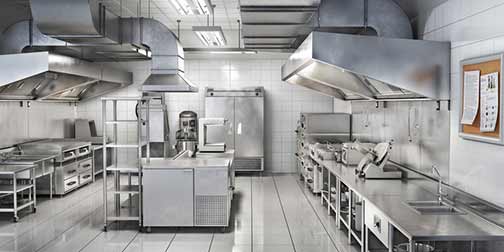
Summer is one of the busiest periods of the year for your restaurant, says IPM Commercial Property Solutions. The weather is warm, the trees are green, the kids are on holiday, and everywhere, there is the scent of fun. Inside your restaurant, shoppers and family fill every available seat within the establishment.
More customers mean more work for the people in the restaurant’s kitchen, which also means that more grease will find its way into your grease trap. Unless you clean the grease trap in readiness for this summer rush, your restaurant is going to have drainage issues.
A grease trap malfunction in your restaurant at the height of summer is the last thing you want. An event like that could have a massive negative impact on your revenue and reputation. It could even result in your facility being shut down by the city.
To make sure your restaurant’s drainage system is fully ready for the influx of customers during the summer season, you should not wait until summer to clean your grease trap. A cleaned grease trap is one step toward a summer devoid of drainage problems in your restaurant.
How to prepare your grease trap for summer
When should you clean the grease trap?
EPA rules for commercial grease trap cleaning and maintenance specify the following:
- The grease trap must be cleaned every three months or when grease makes up 25% of the total wastewater volume inside the trap (the 1/4th Rule).
- The grease trap should be cleaned by a licensed professional because of the danger mishandled grease poses to city infrastructure and the environment.
But these rules are minimum requirements; you may clean your grease trap if:
- You are a high-volume establishment that does a lot of frying or uses a lot of grease. In this case, you may need to clean the trap monthly or more frequently.
- There are strange odors inside your restaurant, especially if those odors fail to go away even after you take out the garbage or clean the kitchen.
- If your drains are slow or showing signs of being clogged. This could be an indication that your grease trap is getting ready to overflow.
- In addition to choosing the correct cleaning schedule, you need to clean the grease trap at the right time.
- It is best to clean your grease trap outside opening hours so that the odors released from the device will not disturb your customers and employees.
- To avoid business disruption and ensure proper cleaning, the grease trap should be cleaned when wastewater will not be running into the trap.

Cleaning the grease trap
To clean the grease trap, a technician will do the following:
- Open the grease trap by detaching the lid with a pry bar, crowbar, or wrench. This must be done slowly to avoid damage to the gaskets that are directly underneath the cover.
- Do an initial visual inspection of the trap before inserting a measuring stick into the trap to check the amount of grease in the trap.
- Remove the stick and use a tape measure to determine the amount of grease inside the trap. This data is recorded in the FOG (fats, oils, grease) pump-out report for your restaurant.
- Using a ladle, the technician will scoop out the layer of congealed grease floating on top of the water and store it in a sealed container for proper disposal later.
- With a wet or dry vacuum, he/she will proceed to suction out the debris and water at the bottom of the grease trap.
- After the grease trap is emptied, the technician will scrub the interior of the grease trap, along with all its parts, using soap and water.
- Lastly, he/she will reinstall the parts of the grease trap and replace the cover. To make sure the trap is working, they will check that water can flow into the device without problems.
To conclude the process, the technician enters the following details – the volume of grease inside the trap, the date of cleaning, the name of the technician who cleaned the grease trap, and other information – into the FOG pump-out report issued by the EPA.
Protecting your grease trap
Cleaning the grease trap is not the only step for maintaining your grease trap. It is also vital to do the following:
- Train your staff: Educate your kitchen staff on what they should not flush into the drains. Each crew member should know the warning signs that your grease trap is full.
- Be emergency ready: Do you have a plan for dealing with a grease trap emergency in your restaurant? Even if have cleaned the grease trap, you still need a game plan for emergencies.
Finally, unless you don’t have much hope for an influx of customers into your restaurant this summer, you certainly want to ensure your grease trap is set to handle the additional strain. Preparing for the coming overload today will make your work easier when summer eventually arrives.

